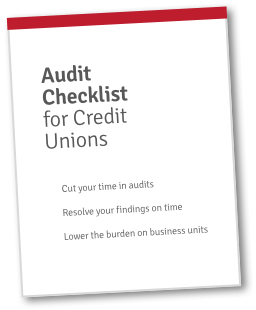Helping credit union audit programs succeed is our mission at Redboard. We’ve developed checklists, worksheets, and more to help auditors increase their bandwidth.
Now, Redboard has teamed up with The Audit Library to save credit union auditors’ time and make their lives easier.
Read on to learn more about each company and how they support credit union, internal audit professionals. Or, follow this link to learn more and request a demo.
Redboard is proud to speak at two upcoming credit union audit conferences. Both are quality events with great lessons for credit union auditors and supervisory committees alike.
Credit union internal audit programs accomplish a lot with relatively few resources. At Redboard, we want to ensure your audit team has a clear path to success.
For most credit unions, repeat findings are an unfortunate but occasional occurrence. Sometimes, the corrective action you took on non-conforming findings didn’t stick. And sometimes, findings take longer to address, or an item gets missed on a spreadsheet, or an email gets buried in an inbox…
As a credit union auditor, you (and your team) are experienced and dedicated experts. But you rely on other business areas to assist, support, and complete audit tasks.
Each year, the NCUA sends out their list of supervisory priorities for the year. Credit unions preparing for their exams can reference the letter to focus on specific areas.
Making a decision to try something new in your work life can be scary. You’re always looking to make improvements and do things better, but at the same time you don’t want to make a mistake. This goes double for anything audit or compliance related.
Credit union audits and exams are ongoing compliance activities for auditors and business units alike. Yet, without a solid, repeatable structure, they can drain significant time and resources. And in today’s economy, resources are already at their breaking point.
Spectra Credit Union is based in Alexandra, Virginia. They control over $500m in assets and are growing quickly. Their audit team is small and also handles risk, compliance, and other regulatory duties.
This blog is based on part of an article I wrote for The Audit Report, the official publication of the Association of Credit Union Internal Auditors.











 Get FREE Access to the Audit Checklist for Credit Unions!
Get FREE Access to the Audit Checklist for Credit Unions!


